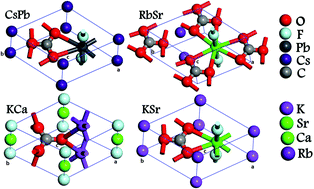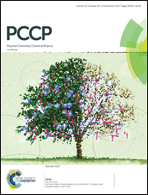Role of spin–orbit interaction on the nonlinear optical response of CsPbCO3F using DFT
Abstract
We explore the effect of spin–orbit interaction (SOI) on the electronic and optical properties of CsPbCO3F using the full potential linear augmented plane wave method with the density functional theory (DFT) approach. CsPbCO3F is known for its high powder second harmonic generation (SHG) coefficient (13.4 times (d36 = 0.39 pm V−1) that of KH2PO4 (KDP)). Calculations are done for many exchange correlation (XC) potentials. After the inclusion of SOI, the calculated Tran–Blaha modified Becke–Johnson (TB-mBJ) band gap of 5.58 eV reduces to 4.45 eV in agreement with the experimental value. This is due to the splitting of Pb p-states. Importantly, the occurrence of a band gap along the H–A direction (indirect) transforms to the H–H (direct) high symmetry points/direction in the first Brillouin zone. We noticed a large anisotropy in the calculated complex dielectric function, absorption, and refractive index spectra. The calculated static birefringence of 0.1049 and 0.1057 (with SOI) is found to be higher than that of the other carbonate fluorides. From the Born effective charge (BEC) analysis we notice that the Cs atom shows a negative contribution to birefringence whereas Pb, C, and F atoms show a positive contribution. In addition, we have also calculated the nonlinear optical χ(2)ijk(−2ω;ω,ω) dispersion of a CsPbCO3F single crystal. We found that d11 = d12 = 4.35 pm V−1 at 1064 nm, which is 11.2 times higher than d36 of KDP. The origin of the highly nonlinear optical susceptibility dispersion of CsPbCO3F is explained. Overall, our results are in agreement with experiments and it is obvious from the present study that CsPbCO3F is a direct band gap, large second harmonic generation, and good phase matchable NLO crystal in the ultraviolet region.



 Please wait while we load your content...
Please wait while we load your content...